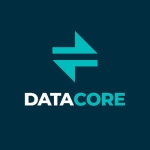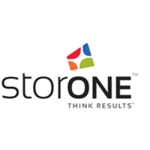What is our primary use case?
We use it for SMB and CIFS for different departments. It is also used for HIPAA and FTC compliance.
How has it helped my organization?
Management, deployment, and compliance are much easier. We're doing NetApp Volume Encryption (NVE), so it has increased the security model as well.
We use ONTAP for our mission-critical applications. E.g., at our pharmacies, we started loading data onto our NetApp systems.
What is most valuable?
- Ease of use.
- Ease of expansion.
- It doesn't go down and is very reliable.
- It is quite fast.
- Since we have a hybrid solution, we can accommodate for the performance that we need.
What needs improvement?
We would like more building performance monitoring. Right now, we have to buy separate products.
What do I think about the stability of the solution?
It has been very stable. We haven't had a significant outage. We do take time and test as if we were going to go down, but we haven't gone down yet.
What do I think about the scalability of the solution?
Because we are using ONTAP Cluster Mode, if we want to increase, we add nodes or pairs of nodes. It is that easy.
How are customer service and technical support?
I would rate technical support as an eight of ten. Sometimes, we have had some delays, on holidays and weekends, getting the right resource for a specific problem.
When we need to escalate an issue, there can be a delay when they have to find somebody. Besides that, our experience has not been bad.
Which solution did I use previously and why did I switch?
We used and still use Dell EMC.
What about the implementation team?
We used NetApp for the deployment. Right now, we are using a VAR, World Wide Technology, for NetApp operations.
Our experience with World Wide Technology has been good. It's a fantastic company. Whenever we have had issues, if NetApp is not prompt, they almost immediately try to resolve them. They have their own resources. We have increased our support by having them as a middleman.
What was our ROI?
We have seen ROI, especially with the deduplication. We have a high ratio of deduplication and are way past 70 percent of our VDI, as we have almost 400TBs on our VDI. We have been able to save at least a quarter of a petabyte of space.
The solution has helped our organization reduce its overall cost of storage by allowing us to have multiple sites using the multi-tenant security model, segregated from each other, while at the same time using the same resources.
What's my experience with pricing, setup cost, and licensing?
Our cost per IOP is three to four dollars, but we have a hybrid solution. Therefore, we have SSD and spinning disk running together.
In the past, you didn't have to buy separate products. They were mostly included with the purchase. In the end, it's more expensive to buy it separate than together. If you are going to need it, one package at the beginning is cheaper.
I don't like this nickel-and-diming. I like an all in one solution.
Which other solutions did I evaluate?
NetApp is a lot better at replication and easier to set up for replication than its competitors.
Dell EMC is expensive in comparison to NetApp, but its reliable as well. We like them too.
We looked at Pure Storage and some other vendors, but were not convinced it was the direction that we wanted to go.
What other advice do I have?
Do a PoC and compared against your current solution. ONTAP is very intuitive.
We use the solution for analytics and monitoring. Our monitoring system uses both Splunk and Log Insight and the analytics are tie into NetApp.
We haven't used NVMe, but are looking forward to it. To my understanding, it is not ready yet to be implemented on NetApp or any other product. However, we're ready to start testing it as soon as the product's available.
Disclosure: My company does not have a business relationship with this vendor other than being a customer.






